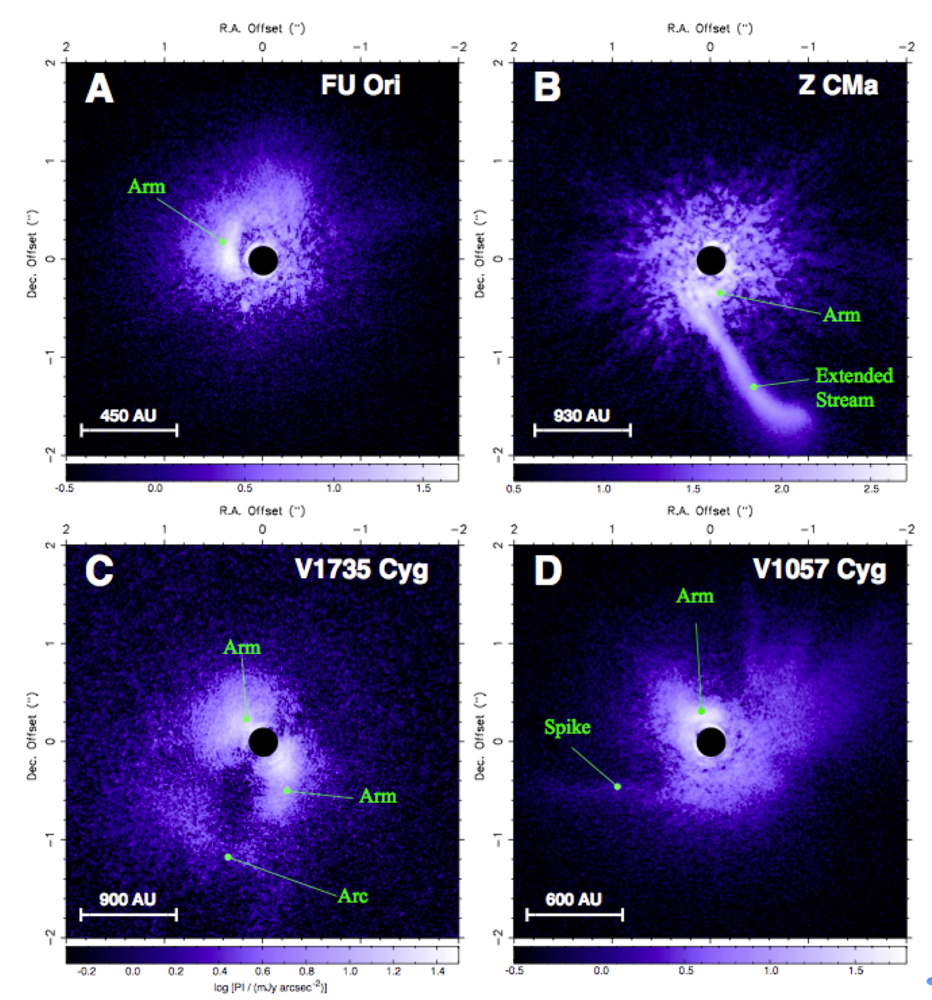Young Stars May Feast Frantically, Grow Chaotically, New Study Shows

Infant stars may release bursts of light when they collide with and devour dense clumps of matter that otherwise might have gone on to form planets, new research suggests.
The new finding has larger implications for understanding how stars grow and evolve early in their lives — specifically, that stars may grow through chaotic series of violent events, instead of steadily getting larger, as previously thought, the authors of the new work noted.
Stars coalesce from vast clouds of gas and dust, and planets emerge from whirling disks of leftover matter that surround newborn stars. Young stars that are still feeding on their parent clouds are known as protostars, while the disks of material that give rise to planets are known as protoplanetary disks. [50 Fabulous Deep-Space Nebula Photos]
Previous research often envisioned protostars growing in a simple manner, steadily accumulating or accreting fuel from surrounding clouds. However, protostars are often far dimmer than expected, given their estimated average rates of accretion.
With the new finding, scientists now have evidence that protostars may evolve in an extremely chaotic way, sporadically accreting dense clumps of gas from their surrounding protoplanetary disks.
For the new work, astronomers focused on protostars known as FU Orionis objects. These young stars, also known as FUors, are known to experience dramatic spikes in brightness, the researchers said. Previous work suggested that FUors brightened because their accretion rates suddenly increased by a factor of 1,000 or more, and staying that way for decades or longer.
To learn more about these outbursts, scientists used the Subaru Telescope, located at the Mauna Kea Observatories in Hawaii, to analyze four of the 11 confirmed FUors, located between 1,500 and 3,500 light-years from the Milky Way.
Breaking space news, the latest updates on rocket launches, skywatching events and more!
The new images of the flaring newborn stars "were surprising and fascinating, and nothing like anything previously observed around young stars," representativesofthe National Institutes of Natural Sciences (NINS) in Japan said in a statement. (NINS is one of the managing institutions of the National Astronomical Observatory of Japan, where some of the paper's authors are based.)
The researchers discovered "tails" projecting from the protoplanetary material around the young stars, as well as spikes of gas and dust.
The researchers created computer simulations that suggested that the protoplanetary disks of newly formed stars could be gravitationally unstable and can fragment, creating dense clumps of gas that can collide with the stars, helping them grow and creating those bright bursts of light.
"We suggest a previously unrecognized evolutionary stage in the formation of stars and protoplanetary disks," study lead author Hauyu Baobab Liu, an astronomer at the Academia Sinica Institute of Astronomy and Astrophysics in Taipei, Taiwan, told Space.com.
This unstable phase of a protostar's life might last several hundred thousand years, the scientists added.
"Although more simulations are required to match the simulations to the observed images, these images show that this is a promising explanation for the nature of FU Ori[onis]outbursts," NINS representatives said in the statement.
The scientists detailed their findings online Feb. 5 in the journal Science Advances.
Follow Charles Q. Choi on Twitter @cqchoi. Follow us @Spacedotcom, Facebook and Google+. Original article on Space.com.

Charles Q. Choi is a contributing writer for Space.com and Live Science. He covers all things human origins and astronomy as well as physics, animals and general science topics. Charles has a Master of Arts degree from the University of Missouri-Columbia, School of Journalism and a Bachelor of Arts degree from the University of South Florida. Charles has visited every continent on Earth, drinking rancid yak butter tea in Lhasa, snorkeling with sea lions in the Galapagos and even climbing an iceberg in Antarctica. Visit him at http://www.sciwriter.us

